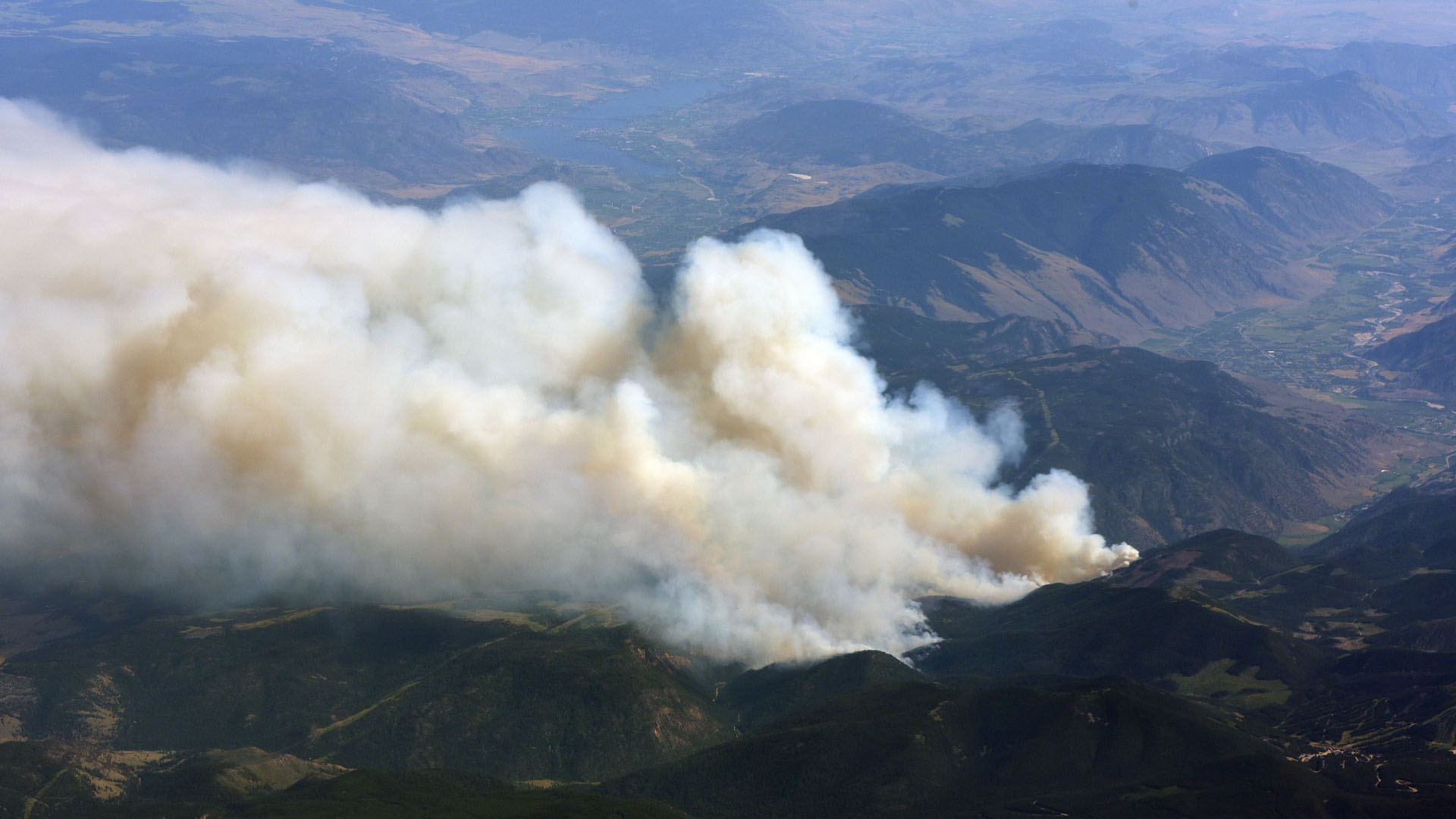
After the Keremeos Creek wildfire swept through the southern Interior of British Columbia in August, one may wonder how these catastrophic events should be handled across Canada. Not only were hundreds of B.C. residents forced to evacuate their homes with only a moment’s notice, but uncharacteristically large fires were spreading at the same time on the opposite coast across Newfoundland. These events prove what scientists have long predicted: climate change means an increase in wildfire occurrence and severity. That is why we suggest governments in Canada need to better engage with Indigenous fire stewardship (IFS).
As increased temperatures and dry environments cause wildfires to spread more easily, Canada is facing significant and alarming challenges in regions not usually affected, many of which are ill-prepared to respond. The increased frequency of wildfires each year due to the changing climate will result only in an unforgiving cycle of destruction. Indigenous Peoples have practices that have existed since time immemorial for preventing, containing and managing wildfires. While these proven cultural practices are known to us, Canada makes little use of them. Why is that so?
Inuit Nunangat needs a community public safety officer program
The historical practices for dealing with wildfires belong to a broad banner known as IFS, which in many ways is diametrically opposed to traditional Western forms of firefighting because it stresses prevention rather than extinguishment. Canada uses these forms of firefighting in addition to more Western forms of nature preservation, which are based on principles of preserving an ecosystem rather than continuously engaging with it – whereas Indigenous Peoples have always interacted with the natural environment in a stewardship role, using techniques such as IFS.
IFS encompasses a multitude of traditional ecological knowledge, including the intergenerational teachings of fire-related knowledge and the role of cultural burnings, with this article focusing primarily on the facet of IFS involving prescribed or controlled burns. While cultural burns are often small-scale, done to maintain the health of the ecosystem, controlled burns are larger, more intense and used to prevent large-scale forest fires.
The ecological maintenance of prescribed burns can be both preventative and healing for the land because it clears dead leaves, tree limbs and other debris from the forest floor. It also provides the opportunity for additional sunlight to help younger trees and plants flourish – all of which can disarm large-scale fires before they can begin. While traditional Western firefighting is usually focused on extinguishment – to put out fires after they arise – the methods and practices of IFS approach these large-scale natural disasters in a different and arguably more effective way – by putting out the fire before it begins.
One such example of the dangers of wildfires is Lytton, B.C. Not only were the majority of the Nlaka’pamux people of Lytton displaced in June 2021 due to a catastrophic wildfire that destroyed the entire village, but just one year later the community was yet again faced with another scathing fire.
Rural communities may be the most impacted at the moment, but studies show that major Canadian cities, including Ottawa and Vancouver, will likely be threatened by wildfires as well. Furthermore, the threats caused by wildfires are diverse, ranging from the destruction of ecosystems, property and infrastructure to contaminating water sources and contributing to extremely harmful air quality as wildfire smoke spreads across the country. This is why wildfires are not just a problem for the frontline provinces, but for everyone.
Recent research confirms the effectiveness of IFS, which can offer increased biodiversity, protect the health of an ecosystem and prevent large-scale wildfires. We also know that Indigenous nations want the capacity and ability to use the stewardship they have enjoyed over their traditional territories for thousands of years. For example, after the tragic Elephant Hill fire, the Secwepemcúl̓’ecw Restoration and Stewardship Society (SRSS) released a report detailing the fire and what went wrong. This report, among others, notes the need for IFS. The SRSS report also mentioned how the knowledge and practices of IFS are complementary to modern firefighting – one focuses on fire prevention while the other focuses on addressing existing fires.
Incorporating IFS must be a careful and ethical practice. Given the federal government’s history of colonization, Indigenous nations may be skeptical of trusting programs that involve sharing traditional, sacred and protected knowledge. However, using the SRSS report as an example, there is clearly a desire to work with the government to incorporate IFS and prevent catastrophic fires in Canada.
Such a change must be mindful and complementary to a greater push for Indigenous autonomy over their traditional territories. It is only in doing so that we can ensure we meet the challenges listed in the SRSS report: “From the very first meeting of the leadership table, Secwépemc communities were raising these broader issues of reconciliation and Indigenous stewardship and sovereignty as intimately connected to wildfire impacts and recovery.” Incorporation of IFS cannot be isolated; it must be Indigenous-led and cognizant of Canada’s historical and modern colonial structures.
What would this program look like? For this, we can turn to existing examples such as the Western Klamath Restoration Partnership in California. This program has a geographic and planning scope that corresponds to the traditional territory of the Karuk Tribe. It is run by the Karuk – in conjunction with federal, state and other tribal authorities – to plan small-scale preventive fires and ensure Karuk territory is a fire-ready landscape.
In Canada, Parks Canada and Natural Resources Canada have large responsibilities for fighting wildfires. To some extent, there has been an acknowledgment that the practices of these two departments is outdated. Canada must follow the example of other jurisdictions and work with Indigenous nations on their territory to ensure that wildfires are put out before they even begin. Such a policy must be expansive and wide-reaching, appealing to different Indigenous nations on different territories, and ensuring data sovereignty and program autonomy for Indigenous nations.
Considering the literal threat of destruction of ecosystems, property, infrastructure, clean air and water supply, wildfires threaten life as we know it. We know that there are solutions and preventive measures for these wildfires – namely those of IFS. Indigenous fire stewardship would show Canada’s commitment to facing climate change while being in accordance with its sacred obligations to Indigenous nations. As long as wildfires continue to rage the way they do, Canada is in danger. We need to act.













